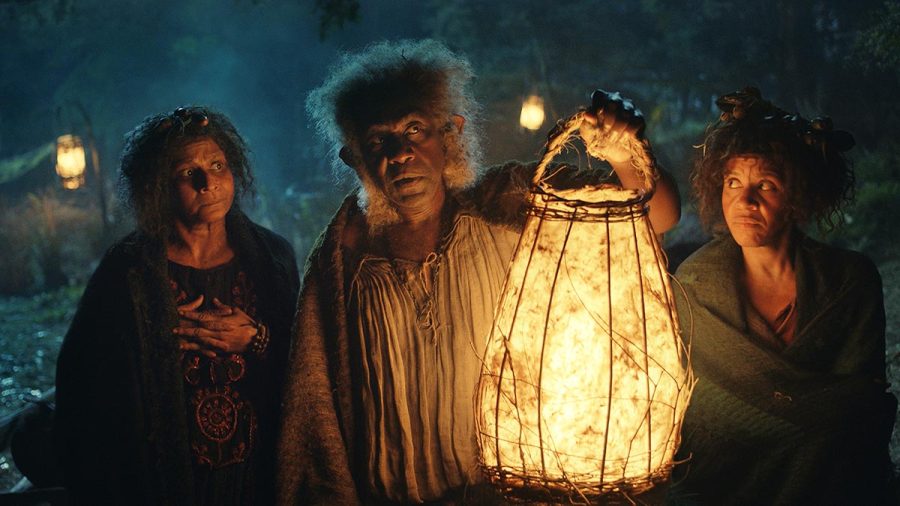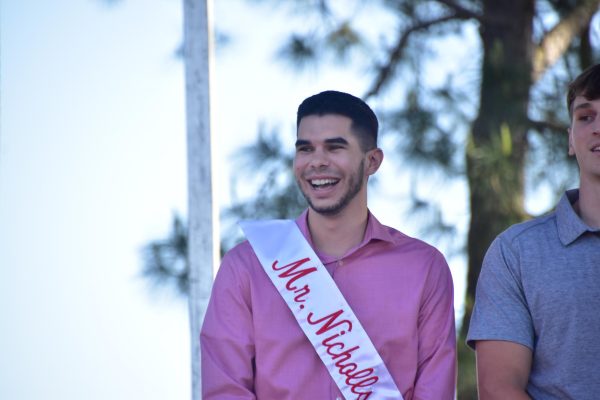Rings of Power: A story of fantasy, fans, adaptation, and trolls
Something is happening in Middle Earth—the second age and the beginning of what’s to come is the forefront of Amazon’s new original series, “The Lord of the Rings: The Rings of Power.” Released Sept. 1, “Rings of Power” has made quite the stir among fantasy and Tolkien fans alike. From racist or misogynistic internet trolls, genuine die hard fans, and all the way to newcomers just trying to begin; “Rings of Power” is one of the biggest pieces of fantasy media right now. But where does it all lead?
Many of the online trolls or haters of the series have taken the stance of being against a black elf and hobbit and female dwarves. They claim this is against Tolkien’s original descriptions in the works, and have caused a stir among past and current fans. Ironically, many descriptions and implied lore for the series is made apparent, and although elves are described as fair skinned, I do not believe the inclusion of a POC elf is any harm to the series. In fact, the character has been very well received by audiences. Many of the internet trolls also forget that Tolkien himself was Jewish and an activist, being a staunch hater of the Nazis and a veteran of the Great War.
Female dwarves and a hobbit played by a POC also do not do anything more than further enhance and show a more diverse look at life on Middle Earth. Many lifelong fans even defend these decisions as being great moves forward to bringing the LOTR series to a new audience.
This is an official spoiler warning for the first two episodes.
In episode one we are introduced to many new characters, along with previous characters from other works. We are shown the young Galadriel, Elrond, and other familiar faces. Among the newer cast we are introduced to Arondir (the aforementioned black elf), Bronwyn, Nori, and a few other new faces, but none as important as the Stranger. In the episode we see how Galadriel has been hunting for Sauron, the creator of the rings of power in the LOTR series. In Rings of Power, he is not yet the man we see in the films, but is on his way to create the rings and build up his dark armies. Galadrial still believes he is out there and goes to hunt him down, finding relics and evidence that a great evil still lives on Middle Earth. She is given the opportunity to leave to the west—a heaven of sorts for the people of Middle Earth—but on her boat ride she leaves feeling as if her purpose is not yet complete and evil is still out there, even if her own king denies it.
We are then shown the life of the pre-hobbit race of harfoots. We get to see this new take on a different hobbit lifestyle and how the nomadic ancestors of the hobbits lived in the second age. During this same time we jump to meet Arondir amid his stay among the humans, watching over them as punishment for siding with the dark lord Morgoth, Sauron’s master. The show gives us insight into where the anti-human sentiment among elves comes from, and even gives clever commentary on how racist and oppressive the elves are towards the humans, despite most humans not siding with Morgoth.
Toward the end the most key moment happens—a village boy finds a broken blade bearing the sigil of Sauron and a meteor falling from the sky. The scene cuts back to the harfoots to show that the meteor was actually a man, clad in a cloak, bearded and giant. He awakes, and with a shout, the entire forest begins to contort and move at his will. He continues to shout at young Nori, flames and wind blowing all around, then offering a look of remorse when realizing he is safe. Finally, the screen cuts to black.
Episode two starts where we left off: Galadriel on her way back to land, the elf Arondir guarding land, and Nori helping to learn about the Stranger. This episode reveals important plot points, with one being the official return of the orcs. Amid the disappearance of a nearby village investigated by Arondir, he finds a well-dug cave system and witnesses an orc, but out of safety and fear retreats to avoid fighting. The same village boy who found the broken sword, Theo, also finds a hole under his house, but when investigating is met with the eye of an orc, beginning the first on-screen appearance of the orcs.
Elron meets with the dwarves to discuss building new towers around the land to unite the people, but his old friend, upset about Elron’s lack of communication, forces him to a challenge of rock-breaking until one surrenders. The challenge doesn’t go well for Elron, but he talks his way into making amends and reviving the relationship with his old friend.
Meanwhile, the Stranger begins to write constellations along the ground, and Nori is curious to know what it means. He repeats strange words over and over, and she agrees to help him find whatever he is searching for.
At night, Nori shows him the fireflies and he is fascinated. The Stranger begins controlling the fireflies with tiny motions, but when he stops the fireflies begin to die. Sinister music plays as we begin to fear the Stranger, but he also looks distressed as he realizes what he has done.
Theo and his mother fight the orc under their home and are successful in killing it. His mother uses the orc’s head to prove she was not making up stories, and the townspeople realize they are in great danger.
Overall, the first two episodes hit hard and fast, leaving little room for one to catch up if not previously familiar with other works, but also refraining from being too confusing. Many fan theories discuss the identity of the Stranger; from Gandalf, to Sauron, to even a Balrog, many are wondering who he will be. I believe that the stranger is Gandalf, but you can come to your own conclusions after watching.
Episodes one and two of “Rings of Power” are definitely worth checking out and are recommended to any Tolkien fans, both new and old. They offer a feeling of nostalgia, while also showing us new unexplored areas of Middle Earth, and I am anxiously awaiting to see where it goes.













